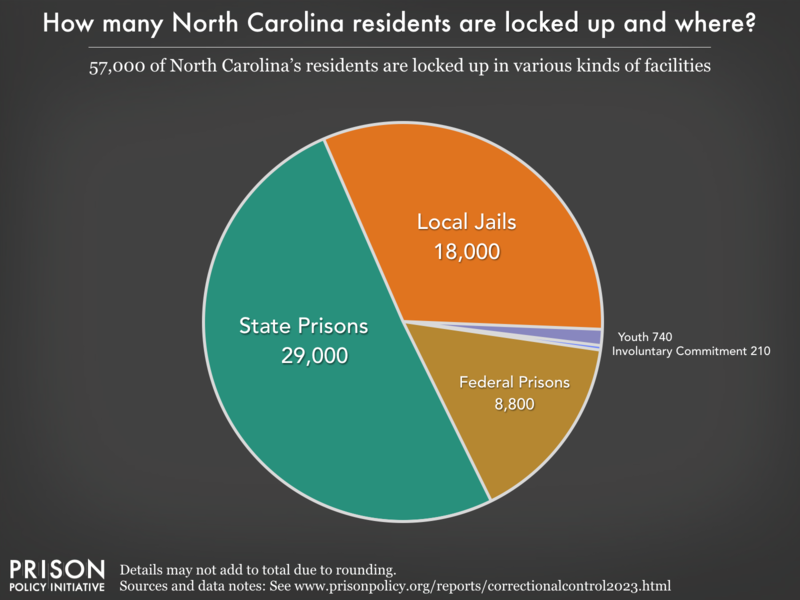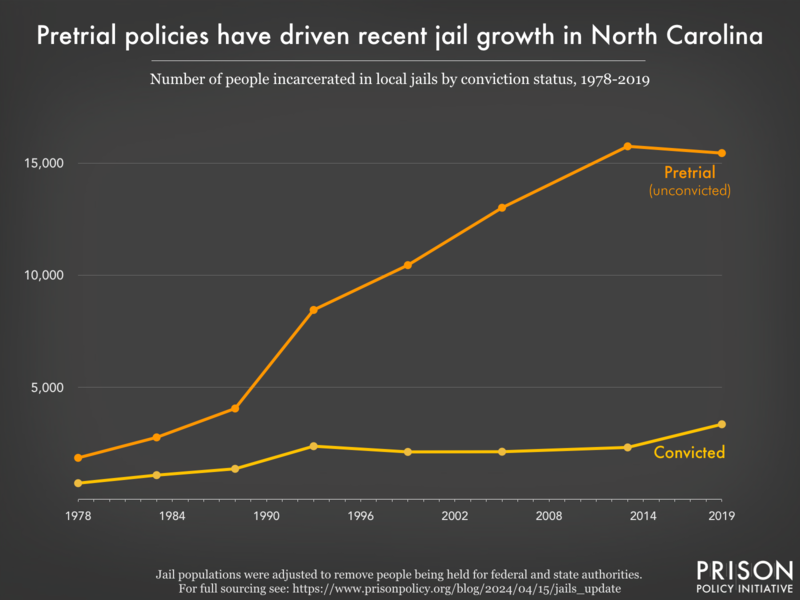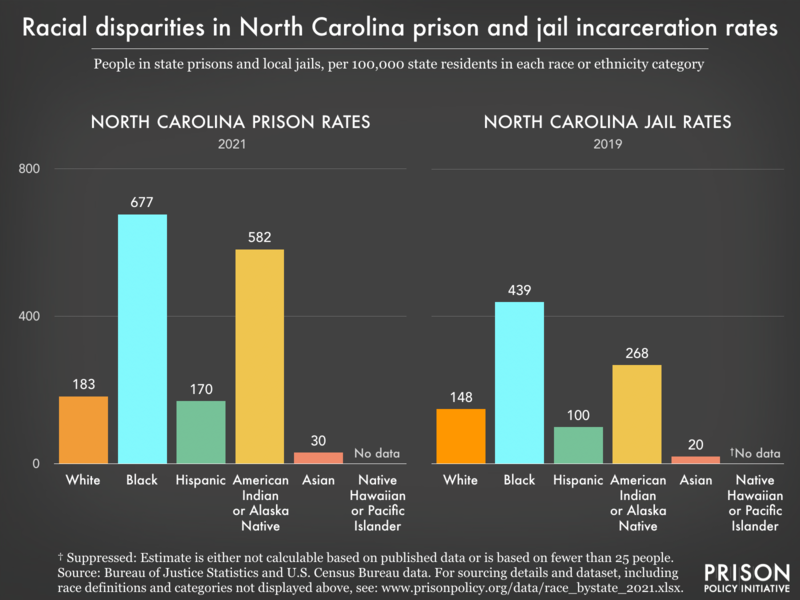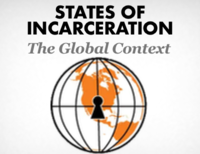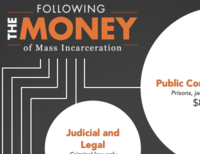Thank you,
—Peter Wagner, Executive Director
Donate
North Carolina profile
North Carolina has an incarceration rate of 559 per 100,000 people (including prisons, jails, immigration detention, and juvenile justice facilities), meaning that it locks up a higher percentage of its people than almost any democratic country on earth. Read on to learn more about who is incarcerated in North Carolina and why.
57,000 people from North Carolina are behind bars
Additionally, the number of people impacted by county and city jails in North Carolina is much larger than the graph above would suggest, because people cycle through local jails relatively quickly. Each year, at least 128,000 different people are booked into local jails in North Carolina.
Rates of imprisonment have grown dramatically in the last 40 years
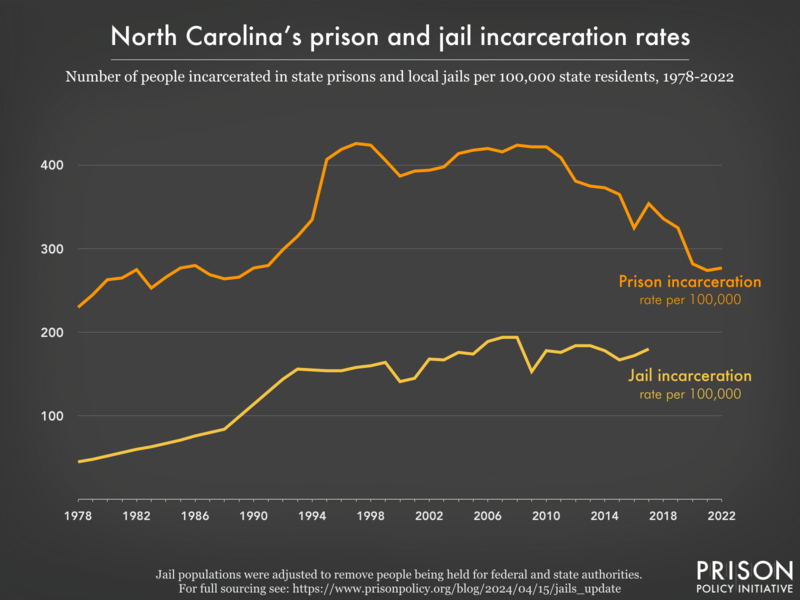
- total numbers rather than rates.
- Women’s prisons: Incarceration Rates | Total Population
- Men’s prisons: Incarceration Rates | Total Population
Today, North Carolina’s incarceration rates stand out internationally

People of color are overrepresented in prisons and jails
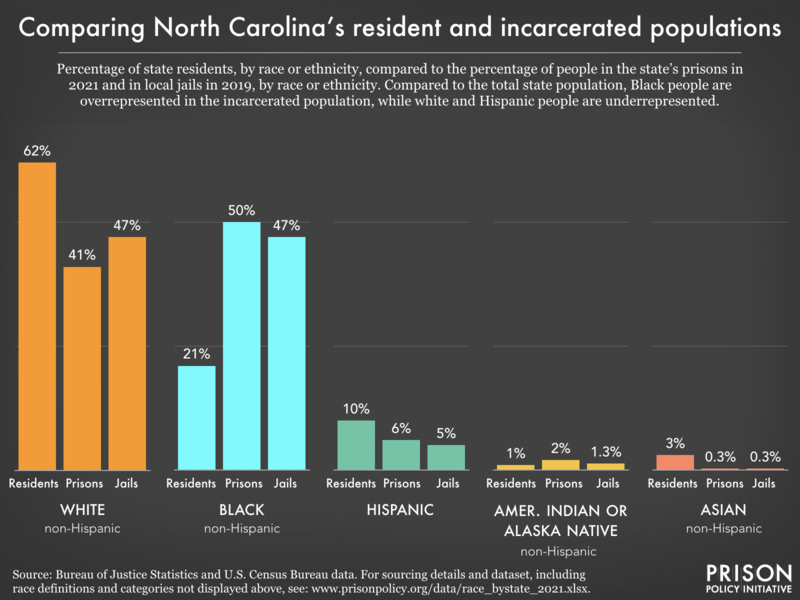
North Carolina's criminal justice system is more than just its prisons and jails
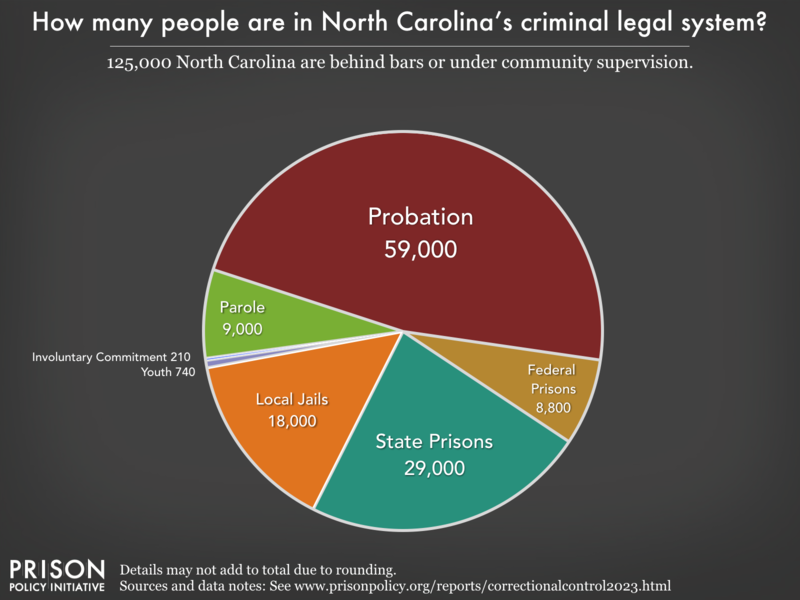
Reports and briefings about North Carolina's criminal legal system:
Filter to show
- Before he leaves office at the beginning of 2025, North Carolina Governor Roy Cooper should commute the sentences of the 138 people on death row in the state.
- People on probation in North Carolina are saddled with onerous rules and conditions they must follow every day or risk incarceration.
- Prisons in North Carolina have tablets, but they may be being used to restrict incarcerated people’s access to books and sap them of the little money they have.
- With an incarceration rate of 559 per 100,000 residents, North Carolina locks up a higher percentage of its people than almost any democratic country on earth.
- After the Dobbs’ decision, striking down Roe v. Wade, North Carolina severely restricted abortion, putting access to the service effectively out of reach for the 17,040 women on probation or parole in the state who also face travel restrictions.
- Prisons in North Carolina force incarcerated people and their families — some of the most vulnerable members of society — to subsidize mass incarceration.
- 82% of people in North Carolina jails have not been convicted of a crime, meaning they're legally innocent. There are simple steps the state can take to reduce this number. Why isn't it?
- North Carolina releases roughly 305,360 men and 93,925 women from its prisons and jails each year. What is it doing to support them upon reentry?
- North Carolina prisons are unable to meet the need for substance use disorder treatment.
- Black people in North Carolina are incarcerated at a rate 3.7 times higher than white people.
- North Carolina's choice to criminalize "failure to appear" may be hurting public safety
- The cost of incarcerating older people is incredibly high, and their risk of reincarceration is incredibly low, yet 14% of people in North Carolina prisons are over the age of 55. Why is the state keeping so many older people locked up?
- North Carolina makes it difficult or even risky for incarcerated journalists to tell their stories.
- In North Carolina, 57,000 people are incarcerated and another 68,000 are on probation or parole.
- Jails in North Carolina charge up to $3.15 for a 15-minute phone call, reaping profits for companies, while prisons charge $1.50 for a 15-minute call.
- North Carolina prisons are replacing incarcerated people's personal mail with scans, stifling family contact
- Bail companies in North Carolina have a track record of avoiding accountability, our report All Profit, No Risk and review of state-by-state evidence show
- North Carolina suspended its $5 medical copays in prisons at the beginning of the pandemic for flu related medical visits — it should eliminate them entirely.
- People in North Carolina prisons must pay for hygiene items and other basics — unless they have no money to afford these products.
- North Carolina prisons charge families up to a 17% fee to transfer money to an incarcerated loved one.
- We gave North Carolina a failing grade in September 2021 for its response to the coronavirus in prisons.
- North Carolina hinders jury diversity by excluding people with felony records until they complete probation and parole sentences
- How many COVID-19 cases in North Carolina communities can be linked to outbreaks in correctional facilities? (data from our report Mass Incarceration, COVID-19, and Community Spread)
- We graded the parole release systems of all 50 states — North Carolina gets an F-
- North Carolina incarcerates women at a rate of 111 per 100,000 residents — higher than almost any democratic country on earth.
- People in North Carolina prisons earn as little as 5¢ an hour for their work.
- The Harm of Prison Gerrymandering, Or is Bernie Madoff Really a Resident of Granville County School Board District 3?
Other resources
- Research on North Carolina in our Research Library
